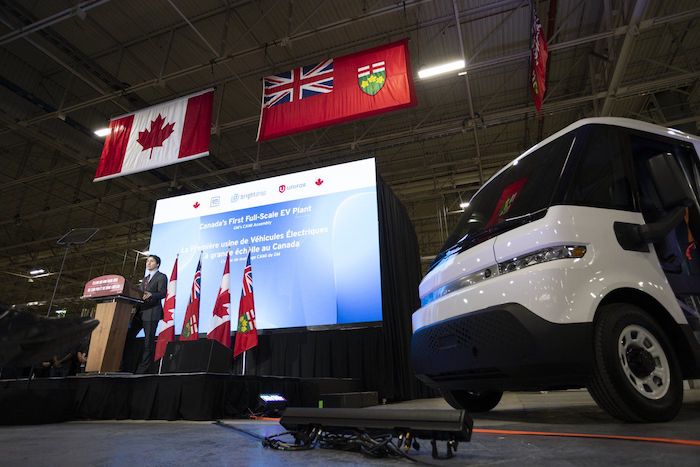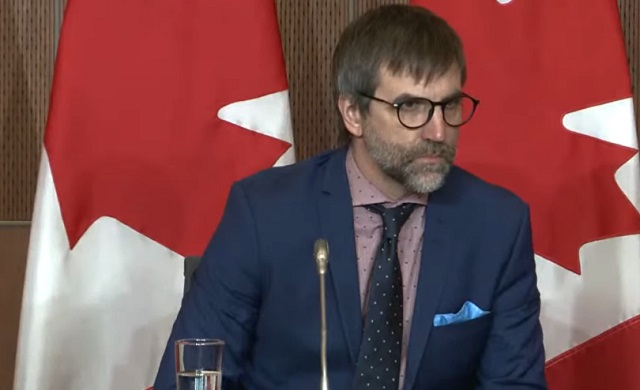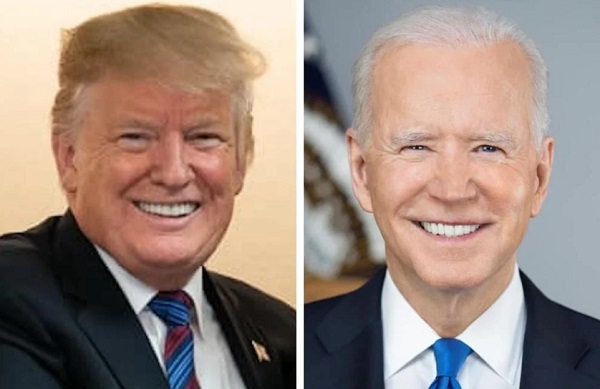Business
Canada moves to mandate electric vehicle sales starting in 2025

By Mia Rabson in Ottawa
One-fifth of all passenger cars, SUVs and trucks sold in Canada in 2026 will need to run on electricity under new regulations Environment Minister Steven Guilbeault is proposing Wednesday.
By 2030, the mandate will hit 60 per cent of all sales and by 2035, every passenger vehicle sold in Canada will need to be electric.
Manufacturers or importers who don’t meet the sales targets could face penalties under the Canadian Environmental Protection Act.
Canada still has a long way to go before approaching the first target in 2025.
In the first six months of this year, electric vehicle sales, including fully-electric and plug-in hybrid vehicles, made up just 7.2 per cent of new car registrations. For all of 2021, the proportion was 5.2 per cent.
Under the draft regulations, to be formally published Dec. 30, the government proposes tracking the sales by issuing credits for vehicle sales.
Fully electric cars and trucks would be worth a bigger credit than plug-in hybrid versions, though the government acknowledges that plug-in hybrids will likely remain in demand in rural and northern areas.
The mandate fulfils a 2021 Liberal election promise. It’s the first major set of regulations to come out of an emissions reduction plan the government published in April.
That plan is Canada’s broad road map toward hitting its goal to reduce greenhouse gas emissions across all sectors to a level in 2030 that is 40 to 45 per cent below what it was in 2005.
Passenger vehicles account for half of all road transportation emissions and about one-tenth of Canada’s total emissions across all sectors.
Before Wednesday’s move, Canada already had targets for electric vehicle sales. But they were not enforceable, and the government wasn’t successfully compelling car companies to ramp up the number of electric vehicles available for sale.
The new targets will be nationwide, though some provinces are already ahead of others.
Quebec and British Columbia already have provincial sales mandates. An analysis released last week by the Canadian Climate Institute concluded that the mandates helped both provinces move well out ahead of the rest of the country on electric-vehicle use.
Anna Kanduth, a senior research associate at the institute, said global supply of zero-emission vehicles is still limited, though it is growing quickly.
“Auto manufacturers are largely prioritizing jurisdictions with some type of sales mandate,” she wrote, adding that places with mandates have much higher rates of zero-emission vehicle adoption and more model choice.
B.C. is leading the field in electric-vehicle sales, which account for almost 15 per cent of all new vehicles registered between January and June. Quebec is in second, at 11.4 per cent of registrations.
There is a steep drop off to third-place Ontario, where only 5.5 per cent of new registrations are for electric vehicles. The number is below four per cent in all other provinces.
This report by The Canadian Press was first published Dec. 21, 2022.
Business
Government red tape strangling Canada’s economy

From the Fraser Institute
The cost of regulation from all three levels of government to Canadian businesses totalled $38.8 billion in 2020, for a total of 731 million hours—the equivalent of nearly 375,000 fulltime jobs.
One does not have to look too deeply into recent headlines to see that Canada’s economic conditions are declining and consequently eroding the prosperity and living standards of Canadians. Between 2000 and 2023, Canada’s per-person GDP (a key indicator of living standards) has lagged far behind its peer countries. Business investment is also lagging, as are unemployment rates across the country particularly compared to the United States.
There are many reasons for Canada’s dismal economic conditions—including layer upon layer of regulation. Indeed, Canada’s regulatory load is substantial and growing. Between 2009 and 2018, the number of regulations in Canada grew from about 66,000 to 72,000. These regulations restrict business activity, impose costs on firms and reduce economic productivity.
According to a recent “red tape” study published by the Canadian Federation of Independent Business (CFIB), the cost of regulation from all three levels of government to Canadian businesses totalled $38.8 billion in 2020, for a total of 731 million hours—the equivalent of nearly 375,000 fulltime jobs. If we apply a $16.65 per-hour cost (the federal minimum wage in Canada for 2023), $12.2 billion annually is lost to regulatory compliance.
Of course, Canada’s smallest businesses bear a disproportionately high burden of the cost, paying up to five times more for regulatory compliance per-employee than larger businesses. The smallest businesses pay $7,023 per employee annually to comply with government regulation while larger businesses pay a much lower $1,237 per employee for regulatory compliance.
And the Trudeau government has embarked on a massive regulatory spree over the last decade, enacting dozens of major regulatory initiatives including Bill C-69 (which tightens Canada’s environmental assessment process for major infrastructure projects), Bill C-48 (which restricts oil tankers off Canada’s west coast) and electric vehicle mandates (which require all new cars be electric by 2035). Other examples of government red tape include appliance standards to reduce energy consumption from household appliances, home efficiency standards to reduce household energy consumption, banning single-use plastic products, “net zero” nitrous oxide emissions regulation, “net zero” building emissions regulations, and clean electricity standards to drive net emissions of greenhouse gases in electricity production to “net zero” by 2035.
Clearly, Canada’s festooning pile of regulatory red tape is badly in need of weeding. And it can be done. For example, during a deregulatory effort in British Columbia, which appointed a minister of deregulation in 2001, there was a 37 per cent reduction in regulatory requirements in the province by 2004.
Rather with plowing ahead with an ever-growing pallet of regulations to be heaped upon Canadian businesses and citizens, government should reach for the garden shears and start reducing the most recent regulatory expansions (before they have time to do too much harm), and then scour the massive strangling forest of older regulations.
Whacking through the red tape would go a long way to help Canada’s economy out of its dismal state and back into competitive ranges with its fellow developed countries and our neighbours in the U.S.
Author:
Business
Trudeau’s environment department admits carbon tax has only reduced emissions by 1%

From LifeSiteNews
The Trudeau Liberals had first seemed to claim that the unpopular carbon tax had cut emissions by 33%, only to explain that the figure is merely a projection for 2030 and the actual reduction thus far stands at 1%.
The Liberal government has admitted that the carbon tax has only reduced greenhouse gas emissions by 1 percent following claims that the unpopular surcharge had cut emissions by 33 percent.
During a May 21 House of Commons environment committee meeting, Environment Minister Steven Guilbeault testified that the carbon tax cut greenhouse gas emissions by 33 percent, before his department backtracked to explain that the figure is a projection for the year 2030, and that the true figure sits at a mere 1 percent.
“I will be the first one to recognize it is complex,” said Guilbeault, according to information obtained by Blacklock’s Reporter.
“If you want simple answers, I am sorry. There is no simple answer when it comes to climate change or modeling,” he said, adding, “Carbon pricing works. This has never been clearer.”
“Carbon pricing alone accounts for around a third of emission reductions expected in Canada,” said Guilbeault, explaining this number was based on “complex statistical calculations.”
However, Conservative Members of Parliament (MPs) pointed out that the numbers provided by Guilbeault’s department do not add up to a 33 percent decrease in emissions, as the department had characterized.
“How many megatonnes of emissions have been directly reduced from your carbon tax since it was introduced?” Conservative MP Dan Mazier questioned.
According to Guilbeault, after the introduction of the carbon tax, emissions reduced by five megatonnes in 2018, fourteen megatonnes in 2019, seventeen megatonnes in 2020, eighteen megatonnes in 2021, and nineteen megatonnes in 2022.
However, the total tonnes of emissions reduced by the carbon tax comes to 73 million tonnes, or 2 percent, of the combined 3,597 million tonnes of emissions over the same five-year period, according to National Inventory Reports.
According to Blacklock’s, Guilbeault failed to explain how the environment department calculated a 33 percent benefit.
Conservative MP Michael Kram pressed Guilbeault, saying, “I want to make sure I have the math correct.”
“In 2022 emissions were at 708 megatonnes and the carbon tax was responsible for reducing 19 megatonnes,” he continued. “By my math that works out to a three percent reduction.”
Associate deputy environment minister Lawrence Hanson explained that the department’s 33 percent emissions cut is a projection of the emissions cut by 2030, not a current statistic.
“It’s the distinction between how much the carbon price might have affected emissions in one year versus how much in 2030,” said Hanson. “So when you heard us talking about its responsible for one third of reductions we were talking about the 2030 number.”
This explanation was echoed by Derek Hermanutz, director general of the department’s economic analysis directorate, who said, “When we talk about one third, it’s one third of our expected reductions. That’s getting to 2030.”
“Yes, but three percent of the total emissions have been reduced as a result of carbon pricing?” Kram pressed.
“No, emissions have declined three percent in total,” assistant deputy minister John Moffet responded.
“And so only one percent of that three percent is from the carbon tax?” Kram asked.
“To date,” Moffet replied.
Prime Minister Justin Trudeau’s carbon tax, framed as a way to reduce carbon emissions, has cost Canadian households hundreds of dollars annually despite rebates.
The increased costs are only expected to rise. A recent report revealed that a carbon tax of more than $350 per tonne is needed to reach Trudeau’s net-zero goals by 2050.
Currently, Canadians living in provinces under the federal carbon pricing scheme pay $80 per tonne, but the Trudeau government has a goal of $170 per tonne by 2030.
On April 1, Trudeau increased the carbon tax by 23 percent despite seven out of 10 provincial premiers and 70 percent of Canadians pleading with him to halt his plan.
Despite appeals from politicians and Canadians alike, Trudeau remains determined to increase the carbon tax regardless of its effects on citizens’ lives.
The Trudeau government’s current environmental goals – which are in lockstep with the United Nations’ 2030 Agenda for Sustainable Development – include phasing out coal-fired power plants, reducing fertilizer usage, and curbing natural gas use over the coming decades.
The reduction and eventual elimination of so-called “fossil fuels” and a transition to unreliable “green” energy has also been pushed by the World Economic Forum, the globalist group behind the socialist “Great Reset” agenda in which Trudeau and some of his cabinet are involved.
-

 Frontier Centre for Public Policy2 days ago
Frontier Centre for Public Policy2 days agoThe Great Canadian Hoax exposed
-

 International1 day ago
International1 day agoFormer GOP Republican Presidential Candidate Buys Activist Stake In Left-Wing Outlet
-

 Energy16 hours ago
Energy16 hours agoFossil fuels not going away anytime soon
-

 COVID-191 day ago
COVID-191 day agoSaskatchewan appeals court upholds COVID-era gov’t restrictions on outdoor gatherings
-

 conflict2 days ago
conflict2 days ago‘What’s The Problem?’: Zelenskyy Says NATO Needs To ‘Shoot Down’ Russian Missiles In Ukraine’s Airspace
-

 COVID-191 day ago
COVID-191 day agoBiden’s Navy secretary says he has ‘no regrets’ about firing 5,000+ unvaxxed sailors, Marines
-

 International1 day ago
International1 day agoNew bill would have exposed alleged conflicts in Biden, Trump presidencies
-

 International18 hours ago
International18 hours agoBiden DOJ authorized FBI to use ‘deadly force’ if needed during raid of Trump’s Mar-a-Lago estate







